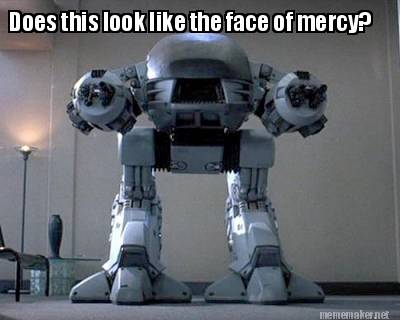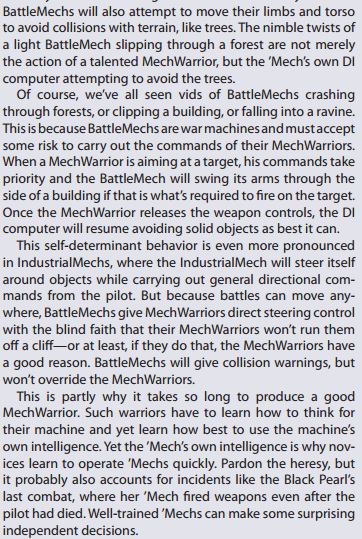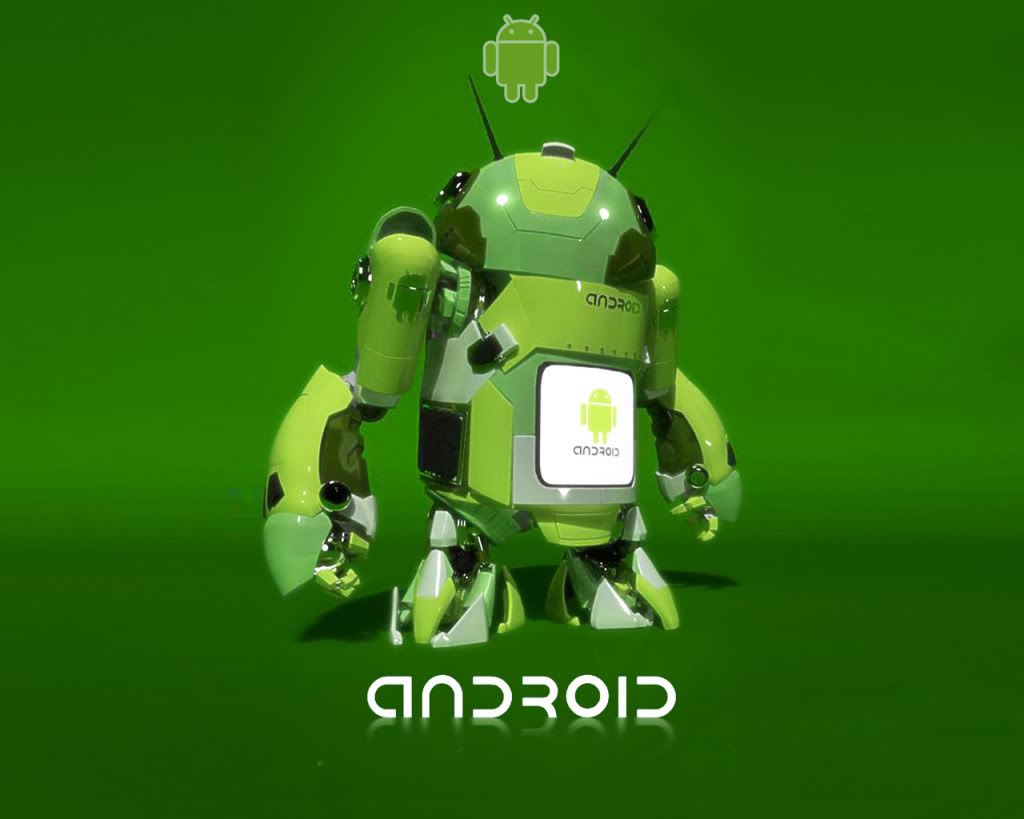 AUSSIETROOPER4, on 10 July 2014 - 09:13 PM, said:
AUSSIETROOPER4, on 10 July 2014 - 09:13 PM, said:
I keep on hearing people refer to mechs as robots or giant robots...
robots are automated or controlled by an AI certainly not piloted by a human.
everytime i hear robot i think of dumb plodding 50s style toy robots with no brains what so ever.
A mech on the other hand is piloted like a carrier fighter. It has a cockpit, ejection seat and weapons and other systems under human control.
would anybody term an f14 tomcat a robot?
The modern usage of "robot" is specifically attributed to the 1920 play,
Rossum's Universal Robots (or R.U.R.) by Karel Čapek.
The play used the specific Czech term "
robota", which refers specifically to "forced labor" (as opposed to "employment" or "volunteer labor"; saying that it means simply "work" is incorrect).
Also, it should be noted that Čapek's
robota were actually organic (rather than mechanical) beings, grown on looms using a "formula" (which becomes a key plot point), making them more similar to the
Neosapiens from
ExoSquad or the "
Skinjobs" from the newer
Battlestar Galactica than to obviously-mechanical constructs like C-3PO or ED-209 or Johnny 5.
As far as answering the question of using one term over another ("mecha" versus "robot" versus (universe/story-specific term)), it becomes a matter of proper classification and communication of specific meaning.
The term "robot",
when not used in the layman's sense, carries with it a specific set of connotations and meanings that set the particular thing(s) being designated "robot" apart from the broader set of generally-related things (for which we can use the term "mecha").
Specifically, the modern term "robot" can be defined as "a reprogrammable, multifunctional manipulator designed to move material, parts, tools, or specialized devices through various programmed motions for the performance of a variety of tasks" (from the Robot Institute of America, 1979).
The
legal definition of "robot" (ultimately derived from the definition used by the
Robotic Industries Association and the robotics industry at large) is a bit more specific:
Quote
Today's robotics systems operate like most machines by way of hydraulic, pneumatic, and electrical power. Electric motors have become progressively smaller, with high power-to-weight ratios, enabling them to become the dominant means by which robots are powered. The crucial element in robotics is the artificial intelligence carried in the programmable circuitry of the machines.
Robots are comprised of elements that differ depending on end use. The hand of a robot, for instance, is referred to in the industry as an "end effector." End effectors may be specialized tools, such as spot welders or spray guns, or more general-purpose grippers. Common grippers include fingered and vacuum types. Another central element of robotics control technology is the sensor. It is through sensors that a robotic system receives knowledge of its environment, to which subsequent actions of the robot can be adjusted. Sensors are used to enable a robot to adjust to variations in the position of objects to be picked up, to inspect objects, and to monitor proper operation (although some robots are able to adjust to variations in object placement without the use of sensors, provided they have sufficient end effector flexibility). Important sensor types include visual, force and torque, speed and acceleration, tactile, and distance sensors. The majority of industrial robots use simple binary sensing, analogous to an on/off switch. This does not permit sophisticated feedback to the robot as to how successfully an operation was performed. Lack of adequate feedback also often requires the use of guides and fixtures to constrain the motions of a robot through an operation, which implies substantial inflexibility in changing operations.
As noted above, a "proper/true" robot has three defining charcteristics/capabilities:
- a built-in, programmable driving machine intelligence (e.g. AI)
- one or more sensors through which the aforementioned machine intelligence can gather information about the environment in which it is operating
- one or more manipulators ("end effectors") through which the machine intelligence can instigate a change in one or more aspects or elements of the environment
BattleMechs and many other piloted, more-or-less humanoid mecha (e.g. HOUNDs, Gears, Mobile Suits, etc) are thus not technically "robots" as they generally lack the crucial "built-in driving machine intelligence"; they rely on (generally) human operators to continuously think for and direct the machine's actions in the stead of the (usually absent or incapable) integrated machine intelligence.
 AlexEss, on 11 July 2014 - 07:48 AM, said:
AlexEss, on 11 July 2014 - 07:48 AM, said:





































